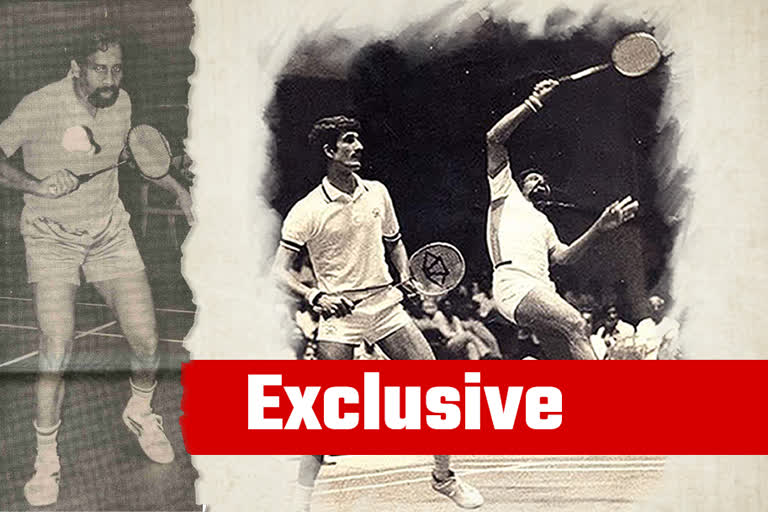Hyderabad: In 1982 when India was hosting the Asian Games for the second time in three decades, badminton was one of the biggest attractions. It boasted chances of winning seven medals. Prakash Padukone's dazzling performance at All England in 1980 in London gave badminton in India a boost.
As the Games began, expectations started building up around the Indian shuttlers. But when Chinese, Koreans and Indonesians are around, it is always tough to win a medal. Yet Indian shuttlers didn't disappoint the home audience. They won five medals, all bronze.
The Indian badminton contingent comprised renowned players of the 80s. Leroy D'sa was one of them.
A doubles player, D'sa had finished the Games notching up a unique record as he bagged three medals in a single Asian Games and won four in his career, which is the highest by any Indian shuttler in Asian Games history.
Also Read: EXCLUSIVE: 'PV Sindhu must go back to WC fitness regime to win Olympic gold'
Till PV Sindhu and Saina Nehwal won the women's singles silver and bronze in the 2018 Jakarta Asian Games, India's only individual medal had come in the 1982 New Delhi Asiad. While legendary Syed Modi won the men's singles bronze, D'sa partnering with Pradeep Gandhe in men's doubles, and Kanwal Thakar Singh in mixed doubles won two bronze medals.
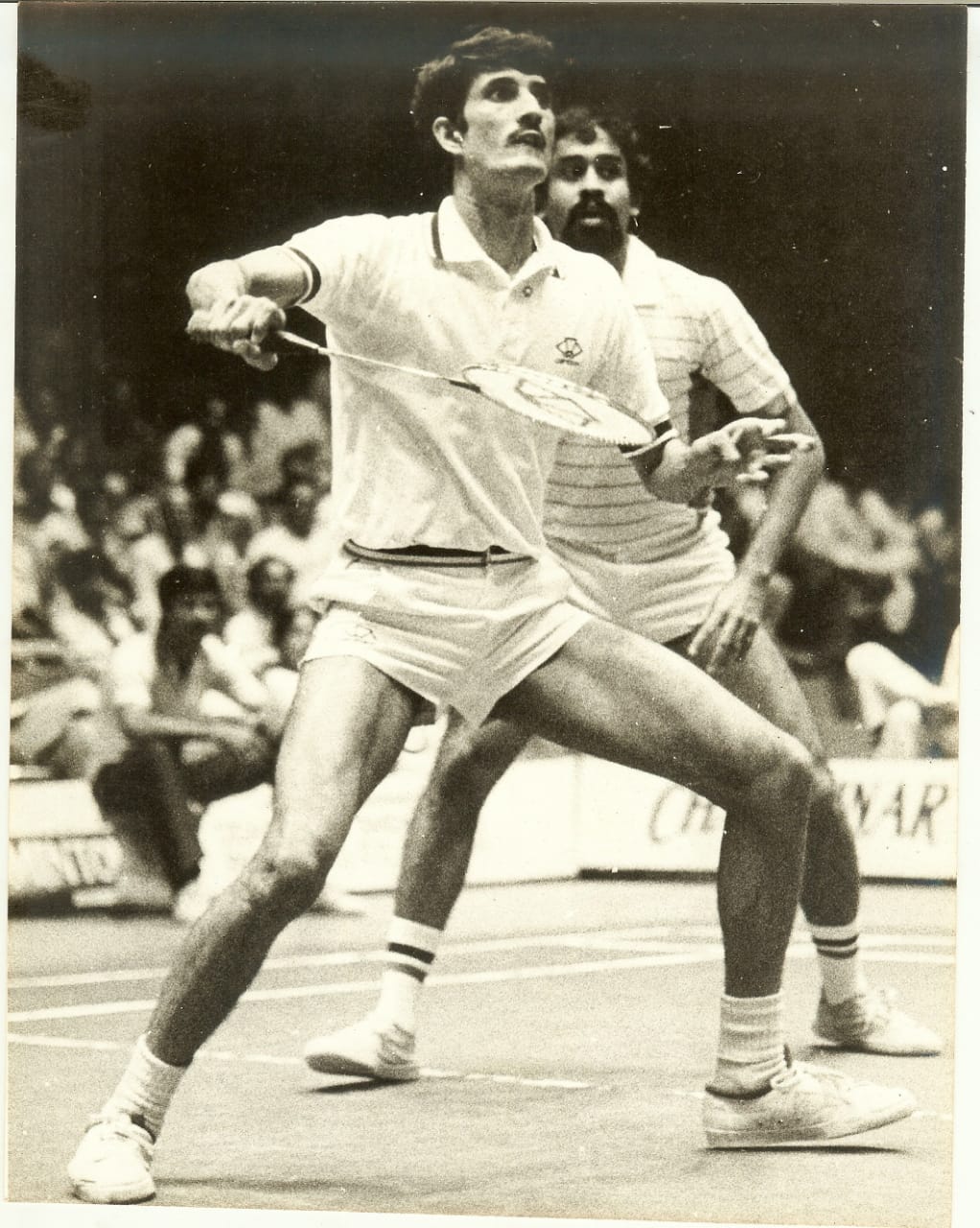
These medals were very special to D'sa as it came in doubles which at that time was an overlooked discipline in India. It must be remembered that he won it without any pre-tournament practice as it was the norm for doubles players back then.
Now, as the 67-year-old acrobatic doubles specialist, who played badminton till his late 50s, is busy making a new generation of players at iconic PJ Hindu Gymkhana in Mumbai, D'sa exclusively talked to ETV Bharat to give us a sense of what it takes to be a doubles specialist in India.
The sexagenarian has shared his insights on the transition of doubles in India. He also talks about the status of Indian doubles shuttlers in international competitions, India's chances of winning in the Tokyo Olympics and why Mumbai badminton is fast disappearing from the national circuit, among other things.
Excerpts:
Q: COVID-19 pandemic disrupted public life in Mumbai. It is, in fact, one of the worst affected cities in India. How are you training in such a tricky time? How challenging is it to train amid fear of COVID-19 infection?
Leroy D'sa: I got a couple of players who play at the national level for Maharashtra. They come and play under my guidance. Now because of the fear of coronavirus infection clubs are not fully open for full-fledged training. So, to cope with the time we got designated slots. To train, we have to book the slots in advance. I got two slots, one from 6:30 to 7:30 and the other from 7:30 to 8:30. I train four students who play at the national level. Most of the national level players train at Gachibowli, Hyderabad. As Gachibowli has a specialised badminton facility, young players prefer to go there.
In Mumbai, at all the clubs where we used to have free hands earlier, there are tremendous restrictions at the moment.
Q: Where are you training your trainees?
D'sa: I train them at PJ Hindu Gymkhana club. It is a very old club, around 126 years old. It is one of the four big clubs of Bombay which were established only to develop a sports culture in the city.
PJ Hindu Gymkhana was very famous for producing sportspersons. At one point, it had given India many national and international badminton players.
Q: You are a doubles-specialist. Tell me how much doubles as a discipline of badminton has evolved in India if you compare the present time with your playing days?
D'sa: Look, now the situation for the doubles is much, much better than what it used to be in earlier days. And the reason is simple: Earlier in India, the people in the administration never realised the importance of doubles. The association (BAI) started understanding the importance of doubles very late, as a result, India never had a good doubles pair.
The reason why doubles is important is that in any team event, whether you are playing in the national championship or Thomas Cup or you are playing at the Asian Games, Commonwealth Games or World Championship, two out of the five matches are doubles. There will be three singles and two doubles. If you don't have a strong doubles back-up, then having singles players are of no use. It doesn't help you. Your team will not do well and win unless there are equally good doubles players to back the singles players.
Q: Why is India failing to produce good doubles players? What is the problem?
D'sa: Doubles being a specialised event it takes a long time for the players also to understand it. In India what happened was that players took a long time to understand that it is difficult to play two events simultaneously.
Earlier, people would play singles, doubles and also mixed doubles; nobody gave doubles that much importance. As time went by people noticed that strong, powerful nations like Indonesia, China and South Korea have a separate set of players for doubles and singles. And those who are playing doubles are not old players. They are young players who are playing doubles exclusively. So, then India realised that it is very important to have a squad of doubles specialists who will play only doubles. That is how the attitude towards doubles has changed in India.
Also Read: EXCLUSIVE: Sindhu, Men's doubles likely to win Olympic medal, says ace coach Vimal Kumar
Ultimately what happens is if you don't have specialised players playing the event, it would be very difficult for the players to focus, as a result, the quality of the game would be low. When you will have expert doubles players playing, then you will automatically get a good result.
If your players are playing singles, their input in doubles will not be as good as the ones who are specialising in doubles. Each discipline requires specialist players to get success. Great singles players may not be able to deliver good performance in doubles and vice-versa. Both singles and doubles players are very important for a team. Some players are equally good at both singles and doubles. But in the long run, they also have to pick one to get the desired result. It is difficult for a player to manage two events together. That is the reason people are specialising now.
Q: There was a time when doubles was seen as an option for old players to survive in the sport. But in recent time this stereotype seems to have changed with Jwala Gutta bringing laurels to the country, and a fresh batch of players like Satwiksairaj Rankireddy, Chirag Shetty, Ashwini Ponnappa and N. Sikki Reddy are emerging from India as a major force in the world badminton. How do you see this change?
D'sa: The concept earlier was to play all the disciplines. Everybody used to do the same thing. Today what happened is people have realised that if they have to do well, it would be better for them to specialize in one discipline to save all their energy for one particular event.
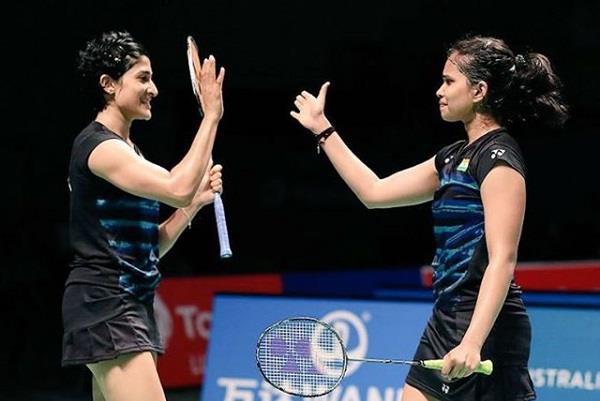
Jwala Gutta used to be a good singles player. I think Satwiksairaj also used to play singles. Ashwini Ponnappa was also a very good singles player. Jwala and Ashwini both used to play singles and doubles at the national championship as they were good at both events. Later they all have switched to doubles as they felt that they are better equipped to play doubles.
Today almost everyone is trying to focus on one or two disciplines to give their best. If you play singles in the morning and doubles in the evening, your body is taking so much load. In such a scenario, you will not be able to give your best in any of the events. It makes things difficult.
Today's players are goal-oriented which is why they are opting for one discipline. I think that is the right decision they are making.
Q: Badminton has resumed now after a long break caused by the COVID-19 pandemic. After the Thailand leg, the Swiss Open is over now. You must have been watching Indian players. With the Olympics around the corner, do you think Indian doubles pairings are capable of winning any medal in the Olympics?
D'sa: They are definitely capable of winning a medal in the Olympics. In my opinion, the current Indian players have beaten most of the tough combinations which clearly indicates they are very much in contention for a medal. But it will depend on how they are going to maintain their form. They have to be also very careful about their fitness.

Two things have to be their top priority. One is to maintain form and the other is to ensure they stay injury-free. They have to look after their health because one injury will spoil their preparation with much time not left for the Olympics. They will lose the rhythm if they get injured now.
Q: The men's doubles pair of Satwiksairaj Rankireddy and Chirag Shetty is being regarded as India's biggest medal contender in doubles as they are occupying a good position in the BWF Olympic Qualification ranking. But they lost two back to back semi-finals in Thailand Open and Swiss Open respectively. What are the weaknesses you have noticed in their game that they need to work on?
D'sa: I am very happy for Chirag and Rankireddy. At the moment things are working very well with them, they are doing extremely well. And I am sure if they continue this way, they could win a medal.
Also Read: Swiss Open: Chirag-Satwiksairaj knocked out of men's doubles
They have been very good on the attack which means they are lacking focus on defence. They have to improve their defence. In the meantime, they have to keep two to three plans ready to counter the oppositions and they have to make sure they are perfectly executing their plans. They must develop a mystery factor in their game because their strengths may not be always getting them points as opponents are aware of their strong areas. They should develop the ability to make a turnaround from a bad situation that is now missing from their game.
Q: Who else can make a mark in doubles in the coming years?
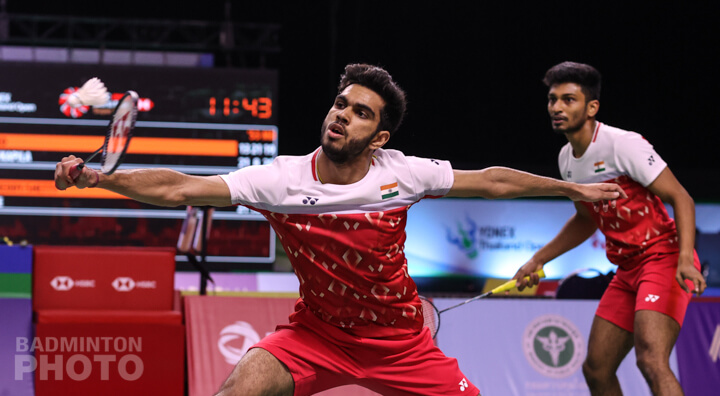
D'sa: We got a new combination in Dhruv Kapila and MR Arjun. These two boys are showing promise. I am hopeful that they will also pick up things quickly. But to produce a good result in doubles takes a long time. So, I think we should give Kapila and Arjun time to build their game. Once they settle down and understand each other's game, then they will be able to perform much better. Today's players are getting world-class facilities, good foreign coaches and sparring partners. So, I think they will pick up the game and start giving the result. But we must give them time to reach that level.
Q: What do you want to say about women's doubles and mixed doubles?
D'sa: In mixed doubles, it all depends on how strong the female partner is and how much support she can give to her male partner. We have women like Ashwini and Sikki Reddy in women's doubles and there are other ladies. See, our ladies have started building a good combination. They need time. Once they start developing their game, they will become a good pair and give a performance at international tournaments. It is just a matter of time. I think as people are aware now about doubles and mixed doubles, our girls are going to develop their game in a way that will help them win matches in future. Earlier, women were hesitant to do physical exercise and building muscle. Now, all that attitude has changed. So today's girls are becoming stronger. I believe that Indian girls will make good doubles pair in the coming years.
Q: Is the current Indian system all-right for doubles?
D'sa: Today Chirag Shetty and Satwik made a mark because our system has changed from its old avatar. Why singles players are doing good now? It is all because of the system. Earlier, people were following Pullela Gopichand and today people look at Saina and Sindhu and come to play women's singles. Now as Chirag Shetty and Satwik are performing, people are becoming aware of doubles as well. So, more people are showing interest in playing doubles. If Chirag and Satwik continue to do well that would present a good example for Indian doubles.
The Badminton Association of India also starts giving importance to doubles now. It has recently appointed Mathias Boe as a doubles coach. For the last five years, BAI has been keeping a special coach for doubles players which is very good. As doubles is getting much-required attention, our players are doing much better now. Today our players are getting world-class facility much like their international counterparts that is why their performance level has improved. Earlier it was missing.
Q: Mumbai is one of the hotbeds of Indian badminton. It provided India with many top-notch players including you. How is the situation now?
D'sa: The situation in Mumbai is very, very bad. Mumbai badminton is only club badminton. There is no culture as we have in Hyderabad where you got big stadiums and academies where anybody with potential can train and become a badminton player. In Mumbai, the situation is completely different. Here we don't have a place where anybody can go and practice. If you want to train here, you have to be a member of a club. To become a member of the club, you have to shell out a big amount. So, everyone can't pay such a huge amount and train. Only children of rich people who are members of these clubs can train. If you are not a member of a club, then it is very difficult for you to become a shuttler here. This culture is hurting the prospect of Mumbai badminton.
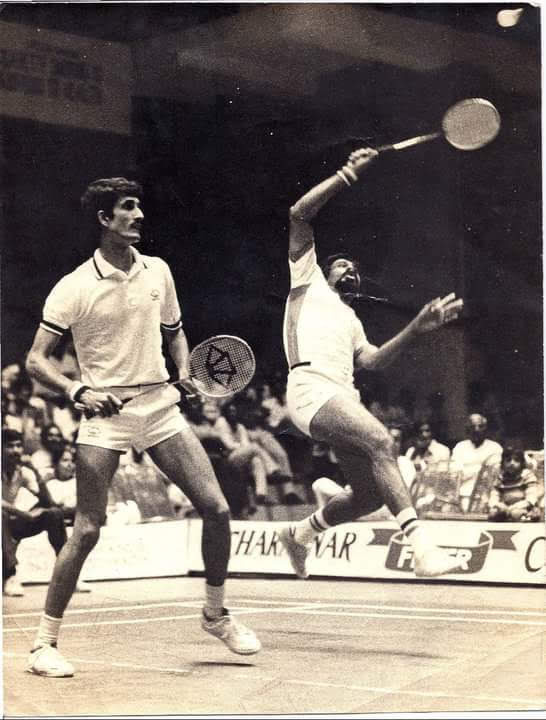
At the same time, people who are members of the club are not cooperating. So, those who are interested to play not getting a chance. Moreover, badminton at these clubs also has lost its sheen as people are playing badminton here only as a pastime sport. They don't care whether their game is good or bad. There is no professional approach to the sport.
Also Read: Badminton coach Deepthi battling the declining legacy at LB Stadium
Earlier, when I was a player if we had requested the club members, they would allow us to practice. Now they not allowing, as a result, Mumbai badminton is dying and places like Kerala and Bangaluru are making a mark in Indian badminton as they are open to anyone who wants to play the sport.
When I was there in Hyderabad, the Lal Bahadur Shastri Indoor Stadium was open to all. It was a big boon for the city's badminton. That is why they have such a large talent pool, more and more players are coming out from there and performing at top international tournaments. Apart from the LB Stadium, many private academies are also contributing to Hyderabad badminton. But Bombay doesn't have that. Earlier, the clubs were functioning for the development of the sport. Now it is serving only the members.
At PJ Hindu Gymkhana, where I am coaching, the situation is the same. Once there was a period when we were told that if you want to play for India become a member of PJ Hindu Gymkhana. Till the late 1980s, there was no Indian team that didn't have Hindu Gymkhana players. It had fallen apart after that.
Q: Is it because of this reason many of the Mumbai players are shifting to Hyderabad?
D'sa: Players are coming to Hyderabad to train under Gopichand. He is a good coach and the facility at his academy is also excellent. What does a player require? A good coach, a place to train and shuttlecocks, isn't it? Gopichand Academy has all those things. A player may be able to buy shuttlecocks, but he will not be able to buy a place to play. In Mumbai even if you have a good coach or shuttlecocks, what is the point of having that if you don't have a place to play.
-- By Sudipta Biswas
